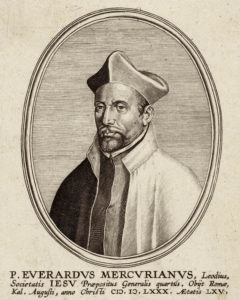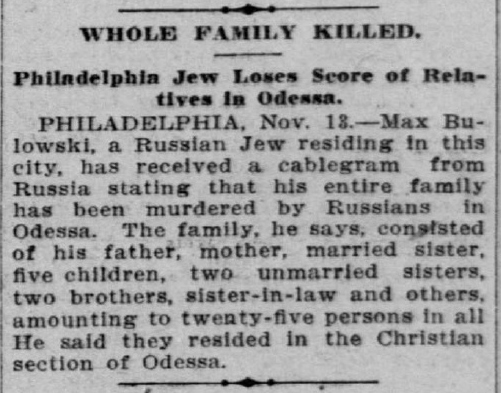Carl Jung and the Jews

“The Jew truly solicits anti-Semitism with his readiness to scent out anti-Semitism everywhere.”
Carl Jung, 1934
For a long time I’ve been fascinated by the way in which Jews obsess over deceased, historical figures who made unflattering comments about their race. The more famous and talented, the greater the intensity of the obsession. Such preoccupations have featured previously at The Occidental Observer, for example in the Jewish vendetta against T.S. Eliot, and against his contemporary Ezra Pound. In Anthony Julius’s T.S. Eliot, anti-Semitism and Literary Form, for example, Julius writes that Jews reading Eliot’s poetry are both “appalled and impressed.”[1] They are appalled because they perceive an unjustified critique upon their ethnic group, and they perceive this critique more acutely because of their ethnocentrism. They are impressed, on the other hand, because they appreciate, and are threatened by, the talent of their target, often despite themselves. The ‘attraction’ which brings them back repeatedly to their target arises from the desire to deconstruct and demean that talent, and therefore avenge or mitigate the critique.
Jews are also firmly in the grip of a historically rooted fear or paranoia. The past is ever present for Jews, prompting them into risky and extremely aggressive actions against host populations. The perfect expression of this paranoia can be found in a very recent article in The Guardian by Jewish journalist Barney Ronay. Ronay is currently in Germany to cover the European Football championships, but he can’t seem to focus on sport. He informs his readers that he has “loved being in this warm, friendly place for Euro 2024, a homecoming of sorts. But that doesn’t stop it terrifying me.” He continues:
Here, by way of example, is a non-exhaustive list of German things that have felt terrifying to me, begun on my first day at the Euros when a happy German woman was laughing uncontrollably on a train passing through woodland outside Munich and I realised that happy uncontrollable German laughter is terrifying. German trains are terrifying. German railway sidings are terrifying. There are transport vibes here, fleeing energy. A German forest is terrifying, in particular a German forest clearing. An empty German park at dusk is terrifying. Any German village square is terrifying … What else? German dark wood furniture. A row of parked German bicycles (Where are they going? Will I need one?). German staircases, corridors, suitcases. Most German shoes. All discarded German shoes.
Many of these fears have their origins in tales passed down to Jewish children, and reinforced through Jewish cultural and political groups. Fear is a key ingredient in the cement that binds Jewish ethnocentrism, which is why the ADL invests a lot of money in surveys of anti-Semitism intended to terrify and shepherd the ethnic flock into cohesive action. In Ronay’s case, “Family myth dictates one of my distant uncles was pulled off a train and shot. The bullet passed through his neck, he lay down for a bit, got up and rejoined the resistance.” I applaud his use of the word myth here, but there are many hundreds of thousands of Jewish families which cherish such fantastical boogeyman tales as historical fact. And Jewish fear, and Jewish ethnocentrism, needs its boogeymen, be they obvious ones like Hitler, or more persistent cultural figures such as Eliot or Pound—figures who can still be discussed publicly with a level of respect and admiration. Among such figures we find Carl Jung.
Carl Jung and the Culture of Critique
Although, or perhaps because, Jung was once associated with psychoanalysis, a movement so Jewish that it comprises one of the Jewish intellectual movements highlighted in Kevin MacDonald’s Culture of Critique, the Swiss psychiatrist has increasingly become the focus of condemnation, deconstruction, and criticism in recent years. In the recently-published Anti-Semitism and Analytical Psychology: Jung, Politics and Culture, Jewish academic Daniel Burston writes that:
In today’s world of psychotherapy, one cannot be a Jungian without having to answer the charge that Jung was both a Nazi and anti-Semitic. … His statements on the over-materialistic values of Jewish psychology, and its corrosive effects on the spiritual nature of the psyche, were made in the 1930s. … Psychoanalysts have used it as a reason not to study Jung; other intellectuals use it as a reason to discredit Jung.[2]
In a paragraph that reads a little like something from a horror novel, Jung’s place as a boogeyman is introduced early, with anti-Semitism explained as a mysterious, ghostly and terrifying phenomenon:
After reading this book, perhaps Jungians will grasp why so many Jews think of anti-Semitism as a shape-shifting but deathless adversary that lives forever in the hidden recesses of Christian and Muslim cultures; one that lies dormant for shorter or longer periods, but always returns to torment us through the ages.
Shape-shifting and deathless. Oh my.
Burston draws a distinction between what he calls “low-brow, high-intensity” anti-Semites, and “high-brow, low-intensity” anti-Semites. He explicitly mentions Kevin MacDonald as an example of the latter, and places Jung in this category also. Burston claims that “anti-Semitic intellectuals” like MacDonald and Jung, while non-violent, “will also offer cover or support for less educated, more overt kind of anti-Semites when circumstances require.” The smear is therefore that men like MacDonald and Jung are essentially thugs in suits.
Burston traces Jung’s thought to the neo-conservative movement dominant during his university years, with Jung painted as having imbibed a semi-barbaric quasi-Germanism. “It rejected naturalism and was drawn to symbolism and irrationalism. In politics it questioned democracy and rejected socialism, preferring a Nietzschean elitism. . . . Jung adopted [Eduard von Hartmann’s] critique of modernity [including his] concern about the ‘Judaization’ of modern society. . . . For Jung, Freud became the representative of such a rationalistic, ‘disenchanted’ view of the world.”[3]
By the 1920s and 1930s, supporters of Freud and of Jung increasingly saw each other as opponents in a battle for civilization as each defined it. Because of his anti-materialism and his criticism of many of Freud’s more perverse theories, Freudians, most of whom were Jewish, regarded Jung as an anti-Semite and latterly as “a herald of fascist and Nazi barbarism.” Burston continues in this vein, arguing for a “significant and disturbing link between the dynamics of antisemitism over the centuries and the psychology and politics of Carl Jung.”
A crucial problem that Jews, past and present, have with Jung is that he dared to turn the analytical gaze back on the Jews themselves. While the entirety of psychoanalysis seemed geared towards what Kevin MacDonald termed “a radical criticism of gentile society,” as well as the development of self-serving theories of anti-Semitism, Jung developed a cutting critique of Jews and of what he called “Jewish anti-Christianism,” with many of his observations arising from direct experience with the Jewish psychoanalytic milieu. In other words, Jung put Jewish quacks “on the couch.” In a letter to an associate dated May 1934, Jung explained:
The Jewish Christ-complex makes for a somewhat hystericized general attitude … which has become especially clear to me in the course of the present anti-Christian attacks upon myself. The mere fact that I speak of a difference between Jewish and Christian psychology suffices to allow anyone to voice the prejudice that I am an anti-Semite. … As you know, Freud previously accused me of anti-Semitism because I could not countenance his soulless materialism. The Jew truly solicits anti-Semitism with his readiness to scent out anti-Semitism everywhere. I cannot see why the Jew, like any so-called Christian, is incapable of assuming that he is being personally criticised when one has an opinion of him. Why must it always be assumed that one wants to condemn the Jewish people?
For this affront, Jung is both dangerous and unforgivable in Jewish eyes. Burston is far from unique in wanting to diminish Jung because of his views on Jews. In the late 1990s a similar effort was made by the British Jewish academic Andrew Samuels, who claimed that “in C.G. Jung, nationalism found its psychologist.” The fearful response of Samuels to Jung was to claim that it was Jung who was gripped by a fear of Jews. Samuels tried to put Jung “on the couch” and to psychologize his attitudes to Jews by explaining them as being rooted in feelings of being threatened:
My perception is that the ideas of nation and of national difference form a fulcrum between the Hitlerian phenomenon and Jung’s analytical psychology. For, as a psychologist of nations, Jung too would feel threatened by the Jews, this strange so-called nation without a land. Jung, too, would feel threatened by the Jews, this strange nation without cultural forms — that is, without national cultural forms — of its own, and hence, in Jung’s words of 1933, requiring a “host nation”. What threatens Jung, in particular, can be illuminated by enquiring closely into what he meant when he writes, as he often does, of “Jewish psychology.”
Even in the early 2000s, there seemed to be a divide between non-Jewish scholars keen to keep Jung in the public eye, and Jewish scholars keen to keep him in the gutter. In a letter to the New York Times in 2004, one “Henry Friedman” took issue with Robert Boynton (NYU) and Deirdre Bair (National Book Award winning biographer) for their apparent agreement that Jung was “neither personally anti-Semitic nor politically astute,” thus absolving Jung of some of the worst accusations levelled against him by Jewish critics keen to associate Jung with the ideas of National Socialism. Friedman called this “a further contribution to a misleading attempt to minimize the importance of Jung’s anti-Semitic racism and his contributions to the Third Reich’s genocidal policies.” Friedman continues:
It is pathetic that Jung should be excused from responsibility for his virulent racism and his importance in the Nazi movement. Most important, it is likely that his ideas about psychoanalysis were instrumental in Hitler and Göring’s desire to cleanse psychoanalysis of Freud’s ideas — especially the notion of the Oedipus complex, which apparently offended Hitler’s sensibilities. To conclude that Martin Heidegger was more of a collaborator than Jung serves to divert attention from the serious nature of Jung’s involvement with the Nazis’ anti-Semitic propaganda. Whether he was a worse offender than Heidegger is hard to assess, but as one who wrote papers on the inferiority of the Jewish race, Jung deserves a special degree of condemnation, not the lame excuse granted him by both Bair and Boynton.
Jung’s Attitudes Towards Jews
Jung’s professional and private writings contain a significant amount of material about Jews, and the content is most often highly critical. It is therefore not surprising that Jews should see Jung as a formidable opponent. Jung made many statements which appear to concur with Kevin MacDonald’s assessment that psychoanalysis under Freud was a Jewish intellectual movement. In 1934 Jung received much criticism for an article he published titled The State of Psychotherapy Today, in which he wrote that psychoanalysis was “a Jewish psychology.” Defending himself against accusations of racism for suggesting that Jews and Europeans have a different psychology, Jung explained:
Psychological differences obtain between all nations and races, and even between the inhabitants of Zurich, Basel, and Bern. (Where else would all the good jokes come from?) There are in fact differences between families and between individuals. That is why I attack every levelling psychology when it raises a claim to universal validity, as for instance the Freudian and the Adlerian. … All branches of mankind unite in one stem—yes, but what is a stem without separate branches? Why this ridiculous touchiness when anybody dares to say anything about the psychological difference between Jews and Christians? Every child knows that differences exist.
Jung believed that Jews, like all peoples, have a characteristic personality, and he stressed the need to take this personality into account. In his own sphere of expertise, Jung warned that “Freud and Adler’s psychologies were specifically Jewish, and therefore not legitimate for Aryans.”[4] For Jung, a formative factor in the Jewish personality was the rootlessness of the Jews and the persistence of the Diaspora. Jung argued that Jews lacked a “chthontic quality,” meaning “the Jew … is badly at a loss for that quality in man which roots him to the earth and draws new strength from below.”[5] Jung penned these words in 1918, but they retain significance even after the founding of the State of Israel, since vastly more Jews live outside Israel than within it. Jews remain a Diaspora people, and many continue to see their Diaspora status as a strength. Because they are scattered and rootless, however, Jung argued that Jews developed methods of getting on in the world that are built on exploiting weakness in others rather than expressing explicit strength. In Jung’s phrasing, “the Jews have this particularity in common with women; being physically weaker, they have to aim at the chinks in the armour of their adversary.”[6]
Jung believed that Jews were incapable of operating effectively without a host society, and that they relied heavily upon grafting themselves into the systems of other peoples in order to succeed. In The State of Psychotherapy Today Jung wrote: “The Jew, who is something of a nomad, has never yet created a cultural form of his own, and as far as we can see, never will, since all his instincts and talents require a more or less civilized nation to act as host for their development.” This process of group development often involved ‘aiming at the chinks in the armour of their adversary,’ along with other flexible strategies.[7]
Jung also believed (in common with a finding in Kevin MacDonald’s work) that there was a certain psychological aggressiveness in Jews, which was partly a result of the internal mechanics of Judaism. In a remarkably prescient set of observations in the 1950s, Jung expressed distaste for the behavior of Jewish women and essentially predicted the rise of feminism as a symptom of the pathological Jewess. Jung believed that Jewish men were “brides of Yahweh,” rendering Jewish women more or less obsolete within Judaism. In reaction, argued Jung, Jewish women in the early twentieth century began aggressively venting their frustrations against the male-centric nature of Judaism (and against the host society as a whole) while still conforming to the characteristic Jewish psychology and its related strategies. Writing to Martha Bernays, Freud’s wife, he once remarked of Jewish women that “so many of them are loud, aren’t they?” and later added he had treated “very many Jewish women — in all these women there is a loss of individuality, either too much or too little. But the compensation is always for the lack. That is to say, not the right attitude.”[8]
Jung, meanwhile, was cautious about accusations of anti-Semitism, and he was “critical of the oversensitivity of Jews to anti-Semitism,” believing “one cannot criticise an individual Jew without it immediately becoming an anti-Semitic attack.”[9] It is certainly difficult to believe that Jung, who basically argued that Jews had a unique psychological profile and had developed a unique method for getting on in the world, would have disagreed with the almost identical foundational premise of MacDonald’s trilogy. In fact, Jung believed that playing the victim and utilizing accusations of anti-Semitism against their critics were simply parts of the Jewish strategy—a useful cover for concerted ethnocentric action in “aiming at the chinks in the armour of their adversary.” For example, after the war, in a 1945 letter to Mary Mellon, he wrote, “It is however difficult to mention the anti-Christianism of the Jews after the horrible things that have happened in Germany. But Jews are not so damned innocent after all—the role played by the intellectual Jews in pre-war Germany would be an interesting object of investigation”[10] Indeed, MacDonald notes:
a prominent feature of anti-Semitism among the Social Conservatives and racial anti-Semites in Germany from 1870 to 1933 was their belief that Jews were instrumental in developing ideas that subverted traditional German attitudes and beliefs. Jews were vastly overrepresented as editors and writers during the 1920s in Germany, and “a more general cause of increased anti-Semitism was the very strong and unfortunate propensity of dissident Jews to attack national institutions and customs in both socialist and non-socialist publications” (Gordon 1984, 51).[i] This “media violence” directed at German culture by Jewish writers such as Kurt Tucholsky—who “wore his subversive heart on his sleeve” (Pulzer 1979, 97)—was publicized widely by the anti-Semitic press (Johnson 1988, 476–477).
Jews were not simply overrepresented among radical journalists, intellectuals, and “producers of culture” in Weimar Germany, they essentially created these movements. “They violently attacked everything about German society. They despised the military, the judiciary, and the middle class in general” (Rothman & Lichter 1982, 85). Massing (1949, 84) notes the perception of the anti-Semite Adolf Stoecker of Jewish “lack of reverence for the Christian-conservative world.” (The Culture of Critique, Ch. 1)
These sentiments echoed comments made in November 1933 to Esther Harding, in which Jung expressed the opinion that Jews had clustered in Weimar Germany because they tend to “fish in troubled waters,” by which he meant that Jews tend to congregate and flourish where social decay is ongoing. He remarked that he had personally observed German Jews drinking champagne in Montreaux (Switzerland) while “Germany was starving,” and that while “very few had been expelled” and “Jewish shops in Berlin went on the same,” if there was a rising hardship among them in Germany it was because “overall the Jews deserved it.”[11] Perhaps most interesting of all in any discussion of Jewish acquisition of influence, it appears that in 1944 Jung oversaw the implementation of quotas on Jewish admission to the Analytical Psychology Club of Zurich. The quotas (a generous 10% of full members and 25% for guest members) were inserted into a secret appendix to the by-laws of the club and remained in place until 1950.[12] One can only assume that, like other quotas introduced around the world at various times, the goal here was to limit, or at least retain some measure of control over, Jewish numerical and directional influence within that body.
Jung was of course operating in a time period in which racial self-awareness was acute on all sides. Kevin MacDonald explains in The Culture of Critique that, within psychoanalysis, there was a clear understanding among Jews that Jung was an Aryan and not quite capable of being in full communion with its Jewish members and leaders. MacDonald writes:
Early in their relationship Freud also had suspicions about Jung, the result of “worries about Jung’s inherited Christian and even anti-Jewish biases, indeed his very ability as a non-Jew to fully understand and accept psychoanalysis itself.” Before their rupture, Freud described Jung as a “strong independent personality, as a Teuton.” After Jung was made head of the International Psychoanalytic Association, a colleague of Freud’s was concerned because “taken as a race,” Jung and his gentile colleagues were “completely different from us Viennese.” (The Culture of Critique, Ch.4)
Conclusion
To the extent that psychoanalysis continues to exist as a movement, or at least as a niche within academia and culture, it’s clear that Jung “the Teuton” continues to haunt Jews with his comments and criticisms, and the split that occurred in the lifetime of Jung and Freud persists in some fashion a century later — a testament to the fact, perhaps, that psychoanalysis was a tool for racial conflict from its inception. Were he alive today, I’m sure Jung would be amused but perhaps not surprised that he continues to feature in the psyche of Jews, as terrifying a boogeyman as uncontrollable German laughter.
[1] A. Julius, T.S. Eliot, anti-Semitism and Literary Form (Thames & Hudson, 2003), 40.
[2] D. Burston, Anti-Semitism and Analytical Psychology: Jung, Politics and Culture (Routledge: New York, 2021).
[3] G. Cocks (2023). [Review of the book Anti-Semitism and Analytical Psychology: Jung, Politics and Culture, by Daniel Burston]. Antisemitism Studies 7(1), 215-222.
[4] B. Cohen, “Jung’s Answer to Jews,” Jung Journal: Culture and Psyche, 6:1 (56–71), 59.
[5] Ibid, 58.
[6] Ibid.
[7] T. Kirsch, “Jung’s Relationship with Jews and Judaism,” in Analysis and Activism: Social and Political Contributions of Jungian Psychology (London: Routledge, ), 174.
[8] Ibid, 177.
[9] T. Kirsch, “Jung and Judaism,” Jung Journal: Culture and Psyche, 6:1 (6-7), 6.
[10] S. Zemmelman (2017). “Inching towards wholeness: C.G. Jung and his relationship to Judaism.” Journal of Analytical Psychology, 62(2), 247–262.
[11] See W. Schoenl and L. Schoenl, Jung’s Evolving View of Nazi Germany: From the Nazi Takeover to the End of World War II (Asheville: Chiron, 2016).
[12] S. Frosh (2005). “Jung and the Nazis: Some Implications for Psychoanalysis.” Psychoanalysis and History, 7(2), (253–271), 258.

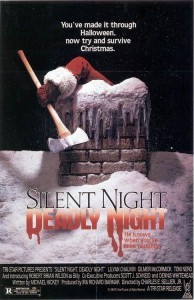

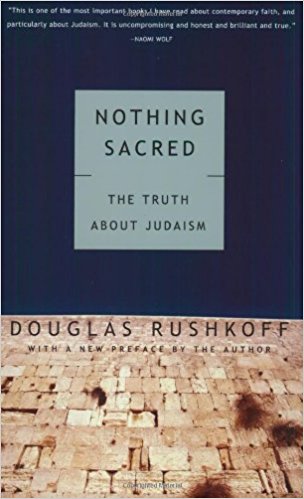
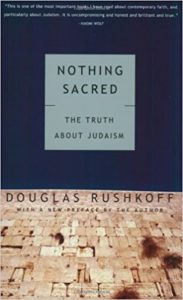 I had known about Douglas Rushkoff’s treatment of Judaism; Nothing Sacred: The Truth about Judaism, for some time and had always meant to read and review it.
I had known about Douglas Rushkoff’s treatment of Judaism; Nothing Sacred: The Truth about Judaism, for some time and had always meant to read and review it.